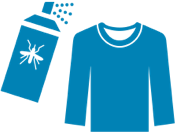Where is dengue most common?
Dengue is present in over 150 countries – more than 40% of the world’s population live in at-risk areas. While most reported cases are in Latin America, Southeast Asia, and the Western Pacific, dengue also is present in many African countries. The disease is spreading to parts of Europe, the USA and China.
How is dengue spread?
Dengue fever is transmitted to humans through the bites of infected female mosquitoes. Aedes mosquitoes (especially Aedes aegypti) are the primary vectors. After virus incubation, an infected mosquito is capable of spreading the virus for the rest of its life.
These mosquitoes are found in tropical and subtropical regions around the world. They live in urban habitats and breed mostly in man-made containers (like buckets of water, potted plants etc) .
 Help us map dengue
Help us map dengue
By telling us about dengue cases near you, you can help us to paint a true picture of dengue fever and predict future outbreaks. Dengue Track can be a valuable resource for scientists, decision-makers and NGOs working in the field.
Help Dengue Track Share your dengue experience
Share your dengue experience
Use the system for yourself. Then share. We need to mobilise an army of dengue trackers if we are to meet our shared goal of reducing the burden of dengue fever.


















